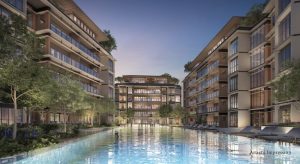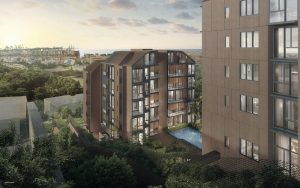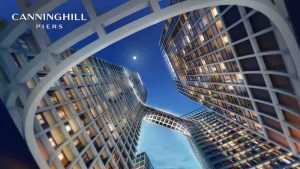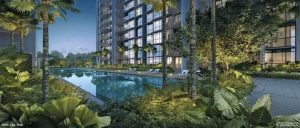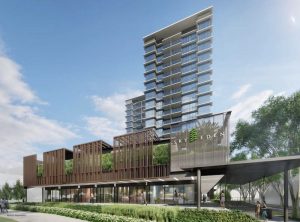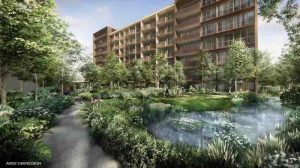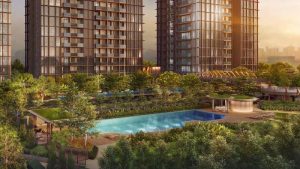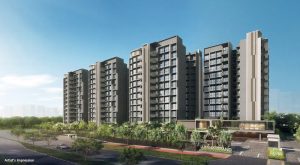Singapore Property | After property market prices fell for 3 years, 2018 seems it is the when the turnaround finally kicks off. Analysts feel that the market is in a trough although they are cautious not to show excessive optimism.
While market watchers agree that, there will be a rise in price, the forecasted increase is between 3% and 15%. Majority of them agree that the transactions will be higher in 2018 than in 2017 due to resales.
However, new home sales are expected to remain at 2017 levels as developers pace out new launches as they anticipate that prices will rise. Some of the new launches include Amber 45 by UOL, New Futura by CDL and Luxus Hills by Bukit Sembawang.
Ong Teck Hui, the national director of research JLL, observed that since property cooling measures may not be relaxed, they resemble an iron ball at the prisoner’s foot so that he does not run too fast.
The recovery could fail if there is government intervention to keep prices down or due to external or economic shocks. However, market watchers do not see this happening in 2018.
“Historically, the average length of the price uptrend of private property in Singapore is 17.6 quarters. If this is the basis of the new cycle, then there are a few more years to go before the upswing of price is exhausted,” said Alan Cheong, senior director Savills Singapore.
He also observed that if the increase is about 5%, the upcycle may go past 2020 but if the rise is 17% then upcycle may be over by 2019.
Analysts also observe that there may not be a steep rise in price as roughly 20,000 new units may be launched in 2018 and 2019 from the en-bloc sites and government land sales.
Although there has been a perceived over- excitement in the en-bloc market due to the bullish land bids by developers, there are signs that the collective sales fever may be easing. Out of the 6 collective sales sites that closed public tenders in December 2017, only 3 were sold.
Mr. Ong warned that the price expectations of property owners might rise just as developers become more calculated in their offers. The price gap could slow down the closing of deals and this could be seen in 1H 2018.
Other analysts agree that more unsuccessful collective sales may occur. Mr. Cheong observed that more sites might be available for sale than developers who need to buy them.
“There are more than 120 potential collective sales sites in Singapore. After smaller sites are sold, the collective sales market may go back to being idle,” said Mr. Cheong.
Alice Tan, head of consultancy and research Knight Frank observed that developers demand for land might go on for 6 to 9 months before there is an equilibrium in demand and supply as more projects are launched from the collective sales sites.
However, she observed that the demand for higher priced land might be quelled by risks such as uneven economic performance, higher interest rates, lower income growth, and muted population expansion.
Based on the official data, cooling measures caused the prices of private homes to fall by 11.6% in 15 quarters after quarter three 2013. The fall broke in quarter three 2017 when the prices of private homes increased by 0.7%. Flash estimates by URA on 9 January for Q4 also indicated the same increase.
Overall, there was a 1% price appreciation in 2017 in contrast to the 2016 decline of 3.1%.
Private homes rent reduced by 12.5% over 15 consecutive quarters before remaining the same in Q3 2017.
The sales of private homes increased in 2017 with the total transaction from January to November totalling 23,113 in comparison to 16,378 for 2016.
Private home sales for the same period excluding executive condominiums were 10,247 exceeding 7,972 units transacted in 2016 and 7,576 yearly average from 2014 to 2016.
Rents have signs of bottoming out even as high vacancies and softening rents are a cause for concern. Analysts expect improvement in vacancies in 2018 as new completions reduce.
According to Dr. Lee Nai Jia, Edmund Tie & Company, rents may moderate at about 1 to 3% while vacancy rates may decline to 5-6% in 2018.
As Derrick Heng, property analyst Maybank Kim Eng recently noted that while the government has valid concerns over the high supply of residential units that are coming up from redevelopment projects, it is a medium-term issue since the units will add to the stock in 2020 to 2021.
“Furthermore, even if the units are completed in 2020 to 2021, the net supply is slightly above 11,000 homes per annum,” added Derrick.
The figure is below 13,200 units which is the 5-year average absorption rate and below 19,500 units added each year from 2014 and 2016.
You can view more new launches by visiting Nim Collection by Bukit Sembawang, Kandis Residence by Tuan Sing or an EC development, Rivercove Residences by Hoi Hup.

